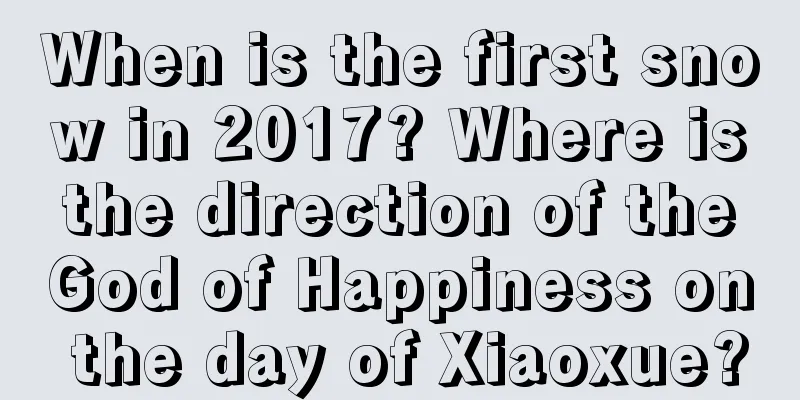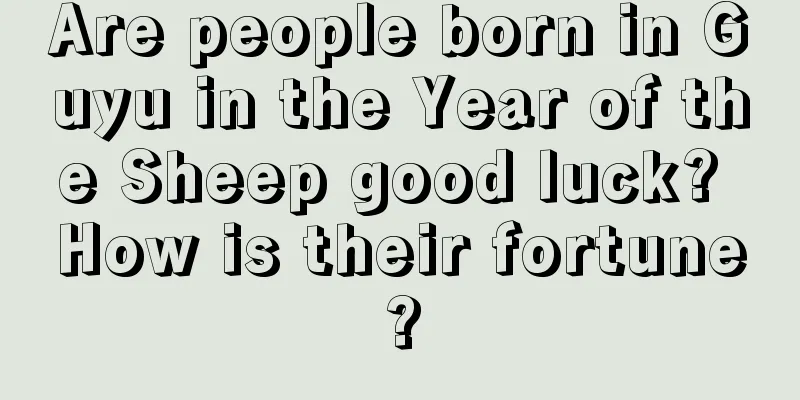What solar term comes after Grain in Ear? Which solar term is Grain in Ear among the 24 solar terms?

As one of the 24 solar terms, Mangzhong is also quite popular. So, let’s take a look at what solar term comes after Mangzhong? Which solar term is Grain in Ear among the 24 solar terms? Every day has its good and bad parts, and different things are suitable to be done on different days. Pay attention to Shuimo.com's special topic on May of the Lunar Calendar in 2022 to know the good and bad of each day.What solar term comes after Grain in Ear?Grain in Ear is a solar term in summer. The solar terms after Grain in Ear are Summer Solstice, Lesser Heat, Greater Heat, Beginning of Autumn, End of Heat, White Dew, Autumnal Equinox, Cold Dew, Frost Descent, Beginning of Winter, Light Snow, Heavy Snow, Winter Solstice, Lesser Cold, Greater Cold.Among them, the Summer Solstice, Lesser Heat and Greater Heat are the summer solar terms. The Beginning of Autumn, End of Heat, White Dew, Autumnal Equinox, Cold Dew and Frost Descent are the solar terms in autumn, while the Beginning of Winter, Light Snow, Heavy Snow, Winter Solstice, Lesser Cold and Greater Cold are the solar terms in winter. Introduction to the summer solar terms after Grain in Ear: Summer Solstice: Summer Solstice is the 10th solar term of the 24 solar terms. The Big Dipper points to noon; the sun's ecliptic longitude is 90°; the solar term falls on June 21-22 of the Gregorian calendar. The summer solstice is the turning point of the sun's northward journey. After the summer solstice, the sun will "go back", and the point of direct sunlight will begin to move southward from the Tropic of Cancer (23°26' north latitude). For areas of my country located north of the Tropic of Cancer, the altitude of the sun at noon begins to decrease day by day after the summer solstice; for areas of my country located south of the Tropic of Cancer, after the summer solstice, the altitude of the sun at noon begins to decrease day by day after passing through the direct sunlight returning to the south. Lesser Heat: Lesser Heat is the eleventh solar term of the twenty-four solar terms, marking the end of the Wu month and the beginning of the Wei month in the Ganzhi calendar. When the Dipper points to Xin, the sun reaches 105 degrees of the ecliptic longitude, and the solar term falls on July 6-8 of the Gregorian calendar every year. "Shu" means hot, and "Xiaoshu" means a slight heat, not very hot. It means the weather is starting to get hot, but it hasn't reached its hottest point yet. Although Lesser Heat is not the hottest season of the year, it is followed by Greater Heat, the hottest solar term of the year. There is a saying among the people that "Lesser Heat and Greater Heat are like steaming above and boiling below." Many parts of my country have entered the season with the most thunderstorms since the beginning of the Lesser Heat. Great Heat: Great Heat, one of the 24 solar terms, is the last solar term in summer. Fifteen days after Lesser Heat, the Big Heat begins when the Big Dipper points to Wei. The sun's ecliptic longitude is 120°. The solar term falls on July 22-24 of the Gregorian calendar. "Shu" means hot, and the Great Heat refers to extreme heat. Compared with Lesser Heat, Greater Heat is hotter and is the hottest solar term in the year with the most sunshine. The "intermixing of humidity and heat" reaches its peak at this time. Climate characteristics of the Great Heat season: extremely high temperatures, frequent thunderstorms and typhoons. Which solar term is Grain in Ear among the 24 solar terms?Grain in Ear is the ninth solar term in the twentieth century and the third solar term in summer.Grain in Ear, also known as "busy planting", is the ninth solar term of the twenty-four solar terms, the third solar term of summer, and the beginning of the Wu month in the Ganzhi calendar. When the Big Dipper points to Si, the sun's ecliptic longitude reaches 75°, and the solar term falls on June 5-7 of the Gregorian calendar every year. Grain in Ear means "cereal crops with awns can be planted." During this season, the temperature rises significantly, the rainfall is abundant, and the air humidity is high, which is suitable for the planting of late rice and other cereal crops. Farming is divided by the "Mangzhong" solar term. After this solar term, the survival rate of crops will become lower and lower. It is a reflection of the ancient farming culture on festivals. |
<<: How about March 17th of the lunar calendar in 2022? Is it an auspicious day for Anmen?
Recommend
What is the Chinese Valentine's Day? How many days are left until the Chinese Valentine's Day in 2018?
Introduction: There are many traditional festivals...
What are the auspicious and taboo aspects of the Autumnal Equinox on September 23, 2019 in the lunar calendar? What are the customs of the Autumnal Equinox?
Introduction: The days in the lunar calendar are d...
Do children born on the 17th day of the seventh lunar month have good fortune? Become very rich and powerful?
Introduction: In our tradition, people usually cel...
What is the lunar calendar for the seventh day of the first lunar month in 2022? Is it an auspicious day?
The seventh day of the first lunar month is people...
Is it a good idea to have a baby boy born on the 15th day of the seventh lunar month during the Ghost Festival in 2019?
The fifteenth day of the seventh lunar month in 20...
Is it auspicious to travel on the tenth day of the twelfth lunar month in 2021?
When traveling far away, there will definitely be ...
Is May 24, 2019 a good date to open a new store or company?
Pomegranate flowers are in full bloom in May of t...
Where is the position of the God of Happiness on the second day of the first lunar month in 2021? Which days are during the Spring Festival?
Introduction: The direction of the God of Happines...
Is it possible to move house on Women’s Day 2019? What should I pay attention to when moving?
Is it possible to move house on Women’s Day 2019? ...
Is the 28th day of the seventh lunar month in the Year of the Rat 2020 a good day to start renovations?
The seventh month of the lunar calendar is commonl...
Is the first day of the fifth lunar month in 2022 suitable for starting construction? How to prepare for the opening ceremony?
The fifth month of the lunar calendar marks the be...
What is the fate of those born on Cold Clothes Day under the sign of Horse? What are some poems about Cold Clothes Festival?
The Cold Clothes Festival marks the arrival of sev...
Is a person born in Xiaoshu a pure yin person? When are people with pure Yin destiny born?
Is a person born in Xiaoshu a pure yin person? Whe...
Will a girl born on the 22nd day of the Cold Dew month in 2020 bring bad luck to her parents?
Introduction: New life comes into this world every...
A complete collection of Xiaohan wedding couplets? Where does couplets come from?
Introduction: Couplets are something rich in cultu...









